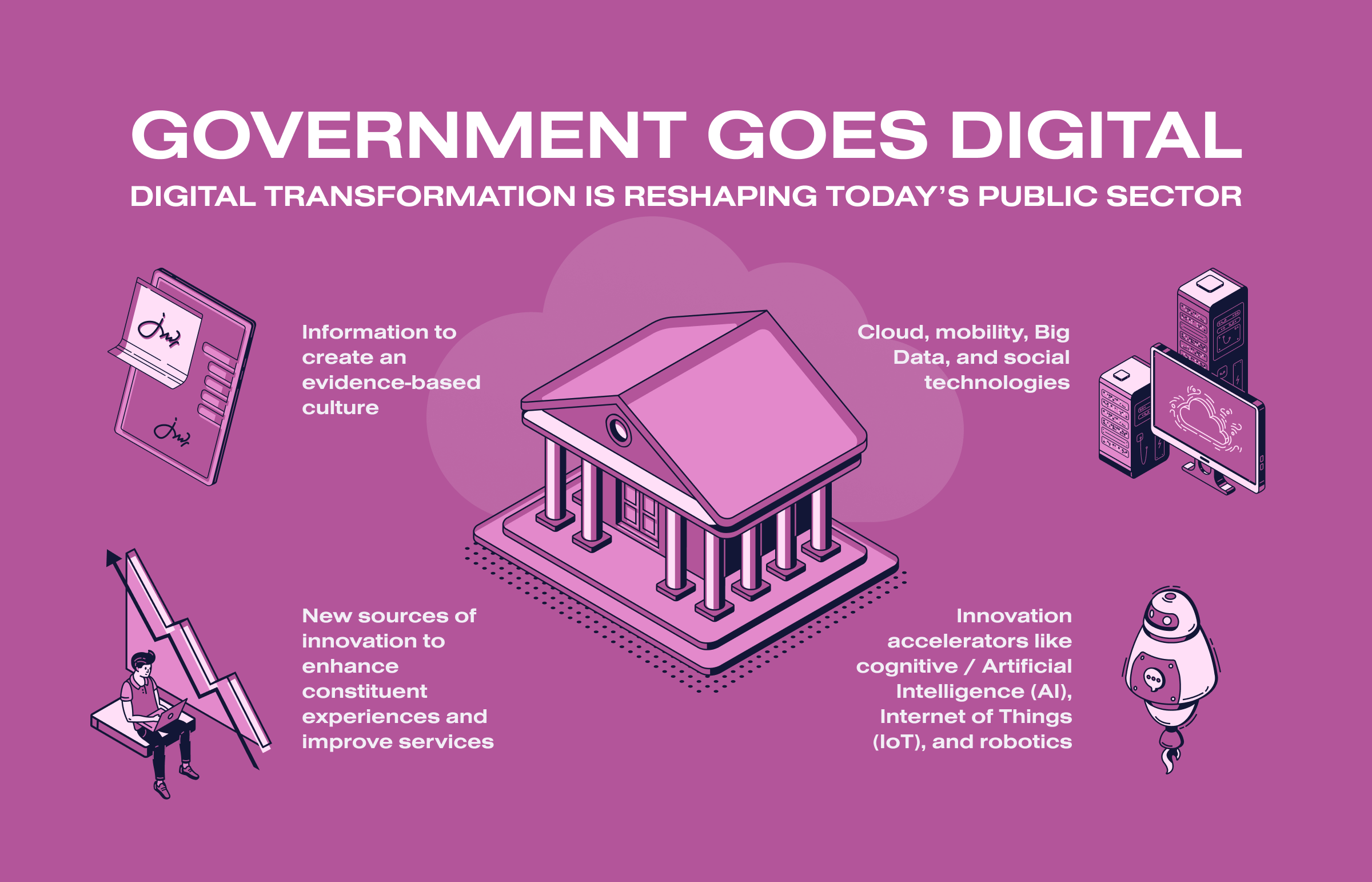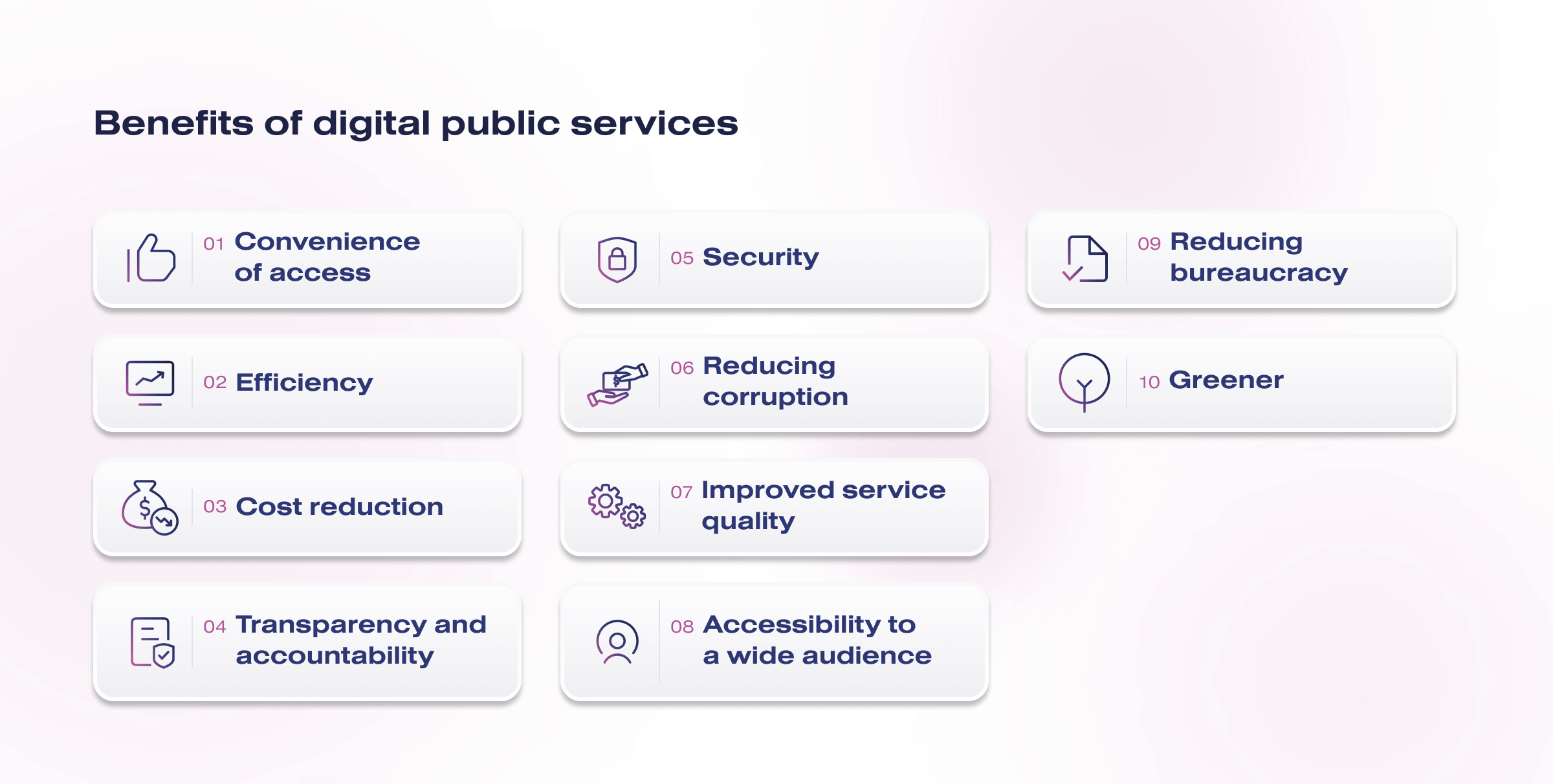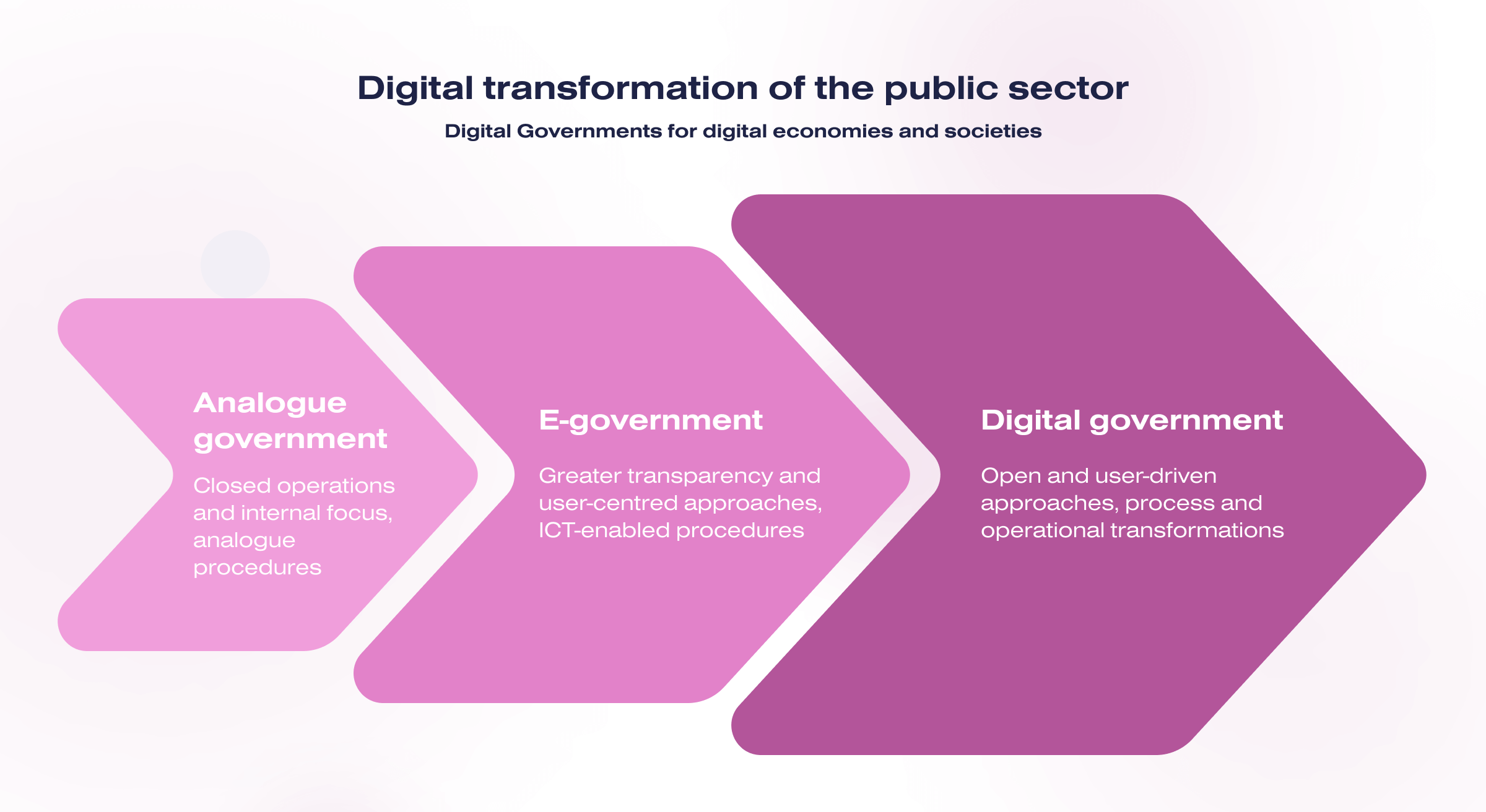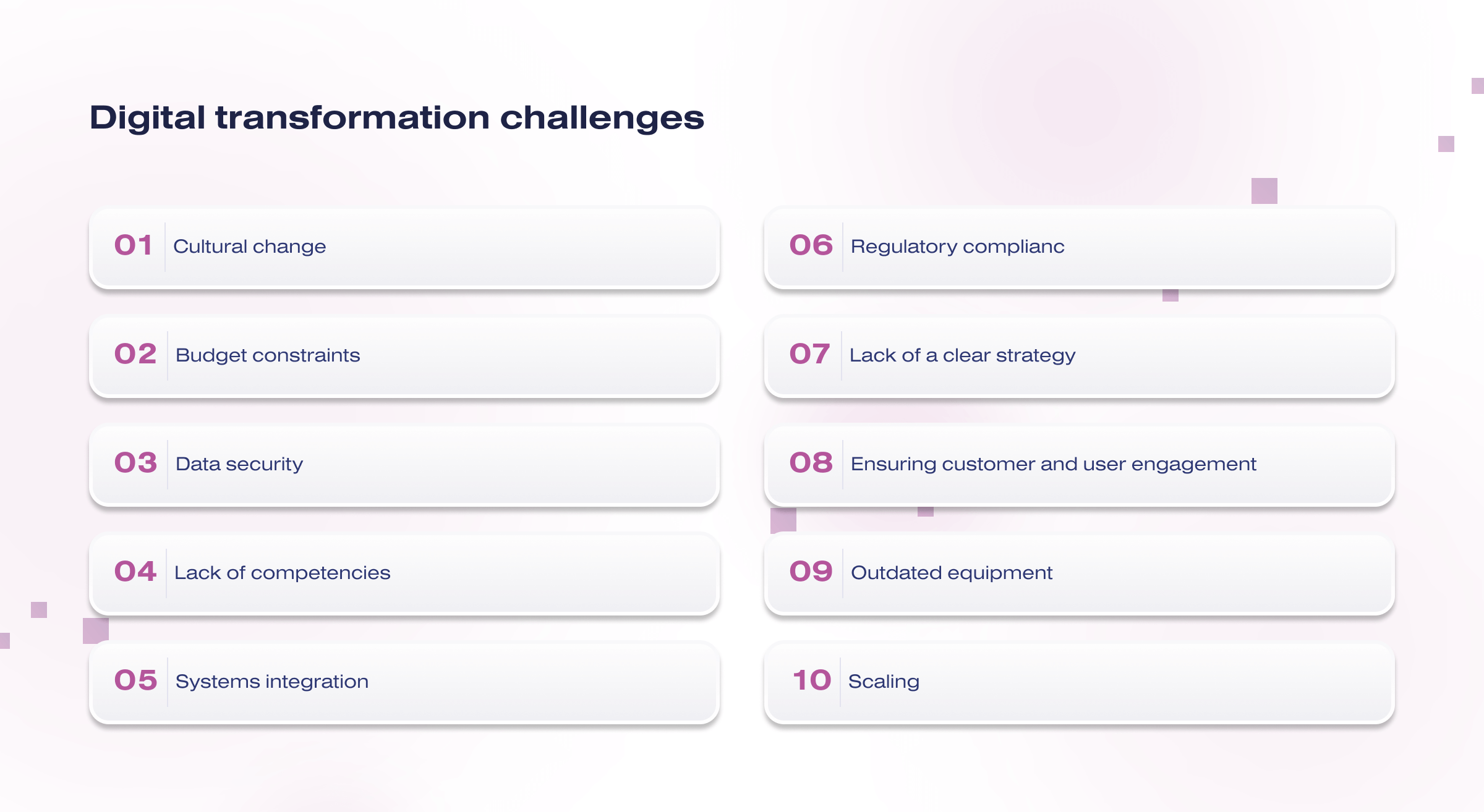According to Statista, worldwide government IT services spending will amount to approximately 209 billion U.S. dollars in 2023. This will be an 8.9% increase from 2022. To achieve successful digital transformation, governments must adopt a holistic approach that includes robust cybersecurity measures, comprehensive data protection strategies, and a commitment to bridging the digital divide. According to a report by McKinsey, digitization has the potential to unlock over $3.5 trillion of economic value for the government and public sector. Nevertheless, collaboration with the private sector, fostering a culture of innovation, and continuous monitoring and adaptation will be essential in overcoming the inevitable challenges.
This article discusses the difference between digital optimization and transformation in government, the benefits of digital public services, and digital transformation challenges.
Key points
What is digital transformation in the government and public sector?

Digital transformation in the state and public sector is applying modern information and communication technologies (ICT) to improve the quality of state and public services, increase the efficiency of state bodies and organizations, and ensure more active interaction between the state and citizens.
Important aspects of digital transformation in the state and public sector include:
- Process automation. It means replacing manual processes and paper documentation with automated systems and programs to perform administrative tasks more efficiently.
- Improving accessibility of services. Creating digital communication channels and online platforms for government and public services such as health, education, and social services provides more convenient access to these services for citizens and businesses.
- Electronic government (e-Government). It implies the development of electronic systems and portals that allow citizens and businesses to interact with government agencies, submit applications, receive information, and perform other administrative procedures online.
- Big Data and Analytics. Using data to analyze and identify trends helps make more informed decisions and optimize processes.
- Cybersecurity. Securing digital systems and data is necessary to protect government and public interests from cyber threats and hacker attacks.
- Innovation and digital skills. Supporting the development of an innovative environment and training citizens in digital skills are necessary to support digital transformation in government.
Digital transformation in the government and public sector is designed to make interactions between government and society more efficient, transparent, and convenient, to promote economic growth, and to provide better service to citizens.
Benefits of digital public services

Digital government services benefit the government, citizens, and businesses alike. Some of the main benefits are listed below:
- Convenience of access. Citizens and businesses can receive government services online without having to physically visit the offices of government agencies. This saves time and money.
- Efficiency. Digital services can be processed and executed faster and more efficiently than traditional paper-based processes. This reduces bureaucratic delays and improves service.
- Cost reduction. Adopting digital technology can reduce the cost of paper documentation, storage, and transmission of information, saving budgetary resources.
- Transparency and accountability. Digital systems allow citizens to track the status of their applications and requests, providing greater transparency and trust in government agencies.
- Security. Modern data protection and authorization systems ensure a high level of privacy and security of information for citizens and entrepreneurs.
- Reducing corruption. Digitalizing public services can reduce corruption by reducing the need for manual interaction between government employees and citizens.
- Improved service quality. Automating processes and implementing digital technologies can reduce errors and improve the quality of services.
- Accessibility to a wide audience. Digital services can be provided in different languages and adapted for people with disabilities, ensuring accessibility for all citizens.
- Reducing bureaucracy. Automating processes reduces the need for unnecessary paperwork and simplifies interactions with government agencies.
- Greener. Reduced use of paper documents and fewer physical trips reduce the negative impact on the environment.
Digitalizing public services benefits the state and its citizens, facilitating more efficient and convenient interactions.
What is the difference between digital optimization and transformation in government?

Digital optimization and transformation in public administration are two different concepts related to the use of technology and data in public bodies, but they have different emphases and goals. Here are their main differences.
Purpose and focus:
- Digital optimization. The main goal of digital optimization is to improve the efficiency and performance of existing processes and systems in government agencies using modern digital technologies. This may include automating tasks, improving the availability of information, and better-serving citizens.
- Government transformation. It aims to bring about more radical changes in how government delivers services and interacts with citizens. It usually involves rethinking strategy, changing the culture of the public service, and creating new service delivery models using modern technology. The overarching aim is to rethink and improve how the state engages with and delivers services to citizens.
Scale and complexity:
- Digital optimization. It typically focuses on improving specific aspects of government agencies, such as data management, registration processes, etc. It can be a more limited and specific project.
- Government transformation. It most often requires more comprehensive changes in government structures and working methods. This may include shifting to a digital culture, revising policies and standards, creating new organizational models, and even rethinking the state’s mission and goals.
Time dimension:
- Digital optimization. It can be a faster and more concrete implementable measure that can achieve results relatively quickly.
- Government transformation. Transformation in public administration is a longer-term process that can take years to change the culture and structure of public bodies.
Both approaches are important for modern public administration, and the choice between them depends on the specific tasks and goals that the government conveys. It is common to combine the two, starting with digital optimization to improve efficiency and then moving to deeper transformation to better serve citizens and adapt to changing conditions.
Digital transformation challenges

Digital transformation is a complex and multifaceted process with some issues and challenges. The following are some of the major challenges that governments may face when undertaking digital transformation:
- Cultural change. Adopting new technologies and ways of working can cause resistance among employees and managers. Efforts must be invested in changing the corporate culture and building staff support.
- Budget constraints. Digital transformation can require significant financial investment in acquiring and implementing new technologies, which can be challenging for companies with limited budgets.
- Data security. Digital transformation increases cybersecurity risks. Attackers can attack systems and steal sensitive information.
- Lack of competencies. New technologies may require specific skills that employees may not have. Staff must be trained and/or specialists must be hired.
- Systems integration. Governments have different systems and applications that are not always easy to integrate. This can make it difficult to share data.
- Regulatory compliance. Depending on the industry and region, digital systems must comply with different laws and regulations when handling data and implementing digital solutions.
- Lack of a clear strategy. Some governments embark on digital transformation without a clear strategy and plan. This can lead to a waste of time and resources.
- Ensuring customer and user engagement. Digital transformation must meet the needs and expectations of customers and users. Otherwise, it may fail.
- Outdated equipment. Some governments may face the problem of obsolete equipment that makes it difficult to adopt new technologies.
- Scaling. If a government successfully implements digital solutions, it may face the challenge of scaling when new technologies must be supported and extended to a large scale.
Successful digital transformation requires considering these challenges and developing strategies and solutions to overcome them.
Conclusion
The government’s digital transformation journey is poised to bring significant benefits but will not be without its fair share of challenges. The advantages of embracing digital technologies in the public sector are clear: improved efficiency, enhanced citizen services, greater transparency, and cost savings. These benefits empower governments to better serve their citizens and position them to adapt and thrive in an increasingly digital world.
The government’s digital transformation in 2024 represents a pivotal moment in the evolution of public administration. With the right strategies and dedication to the well-being of citizens, governments can harness the power of technology to create a more efficient, responsive, and inclusive society, ultimately ushering in a brighter future for all. Look for a reliable tech partner? Contact SoloWay Tech!




